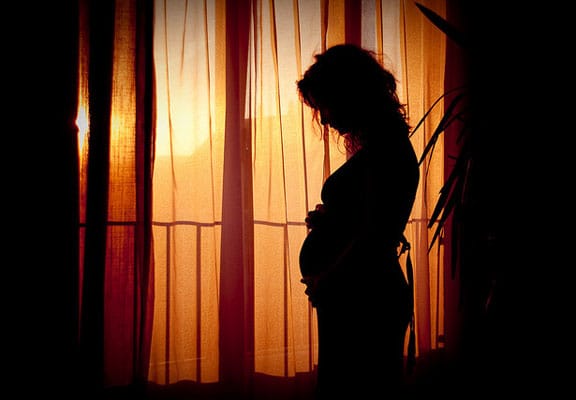

Credit: Stefan Pasch/ hubeRse on Flickr, under Creative Commons (CC BY-NC-SA 2.0).
(WOMENSENEWS)– Maternal mortality rates approaching 1-in-1,000 pregnant women occur in places such as Somalia and Texas.
That’s right, Texas, the Lone Star state that continuously expends enormous energy to defund its own women’s health program and Planned Parenthood.
The maternal mortality rate for Texas has quadrupled over the last 15 years to 24.6 out of 100,000 births in 2010, from 6.1 per 100,000 live births in 1996, according to a report last year from the state’s Department of Health Services.
Many counties report no maternal deaths.
But two scarcely populated Texan counties report maternal mortality rates of over 900 per 100,000 births, or nearly 1 percent of all births, according to the report. The state also has 15 counties that have maternal mortality rates higher than 100 deaths per 100,000 births and not all of them are rural.
Those numbers are far worse than the national average maternal mortality rate of 21 per 100,000 live births. But our national statistic offers no pride. It leaves the United States at the bottom of the list of developed nations; meaning, for instance, that more new mothers are dying here than in Croatia.
Multiple factors could explain the high U.S. rates, but the actions of Texas Gov. Rick Perry cannot be ignored when looking at that state in particular.
Perry, in an effort to boost his anti-abortion credentials for his short-lived presidential campaign a year ago, announced during a South Carolina forum sponsored by Personhood U.S.A., a Colorado-based organization with the primary mission to serve Jesus by being an advocate for a “pre-born” child, that as governor he would support defunding Planned Parenthood in Texas. Even though its clinics did not use state funds to perform abortions, it was enough, Perry said, that the clinics were affiliated with an organization that provides abortions.
Closed Clinics
This came on the heels of the Texas legislature cutting funds for the state’s women’s health program by two-thirds in 2011, also supported by Perry.
News organizations reported that the cuts resulted in at least 60 clinics closing and an estimated quarter of a million women losing access to basic care, such a breast exams, cancer tests, contraceptives and treatment for sexually transmitted diseases.
Data available elsewhere on the state’s health department website indicate that the maternal mortality rate among black mothers grew to 65.9 deaths per 100,000 births in 2009, from 24.9 in 1999 –a rate equivalent to Egypt’s and higher than that for mothers in Tajikistan. White mothers’ death rates, meanwhile, have grown to 30.8 per 100,000 births in 2009, from 4.9 per 100,000 births in 1999.
The deaths among black mothers are likely to be heaviest in a group of four counties in East Texas, including Jasper, notoriously known for the 1998 brutal murder of James Byrd, Jr. by white supremacists. The four counties also include the city of Huntsville, just 70 miles north of Houston and home to a full-service hospital. The county’s maternal mortality rate is 163 per 100,000 births.
Rare if not unique in its thoroughness, the study documents the increased use of medical interventions during birth.
It also provides a county-by-county breakdown of the percent of pregnant women receiving prenatal care; the percent of pregnant women who smoke in the last trimester; the percent of births delivered via Caesarean section; what percentage of those were elective; and data on whether labor was induced. Those rates too varied dramatically county by county and by race.
High C-Section Rates
The state has a C-section rate of 35 percent, 3 percentage points above the national average–with the highest rate of C-sections among black mothers, at 37.9 percent. Black mothers also had the highest rate of elective C-sections at 27 percent, but had the lowest rates of induced births and also the lowest rates of smoking during the last trimester, at 3.7 percent.
Perry limped away from the national spotlight in his trademark cowboy boots, but he continued to stomp on money for women’s health, including Planned Parenthood. After Perry signed the law barring any state funds for Planned Parenthood, the organization sued and at first the courts said he couldn’t eliminate its clinics from receiving state funds; then another court said he could. As it stands now, the case will go to trial in Texas courts.
Meanwhile, the federal government has made the state ineligible for Medicaid reimbursement, costing Texas millions of dollars and a large gain in the number of women and teens who have no access to reproductive health care.
Possibly one of the state’s lawyers preparing for the Planned Parenthood lawsuit will stumble over the state’s abysmal death rates and whisper into Perry’s ear that he might want to take a look at the numbers and begin insisting that he is pro-life for pregnant women. Maybe it could happen. Until then, the maternal mortality rates in Texas can only continue to grow.
Additional research for this article by Ore Zaccheus and Victoria Fitzgerald.
For More Information:
Texas Counties with High Maternal Mortality:
https://maps.google.com/maps/ms?msid=214631479398330733657.0004d4d6926bd0304d18a&msa=0
View Texas Counties with High Maternal Mortality in a larger map


